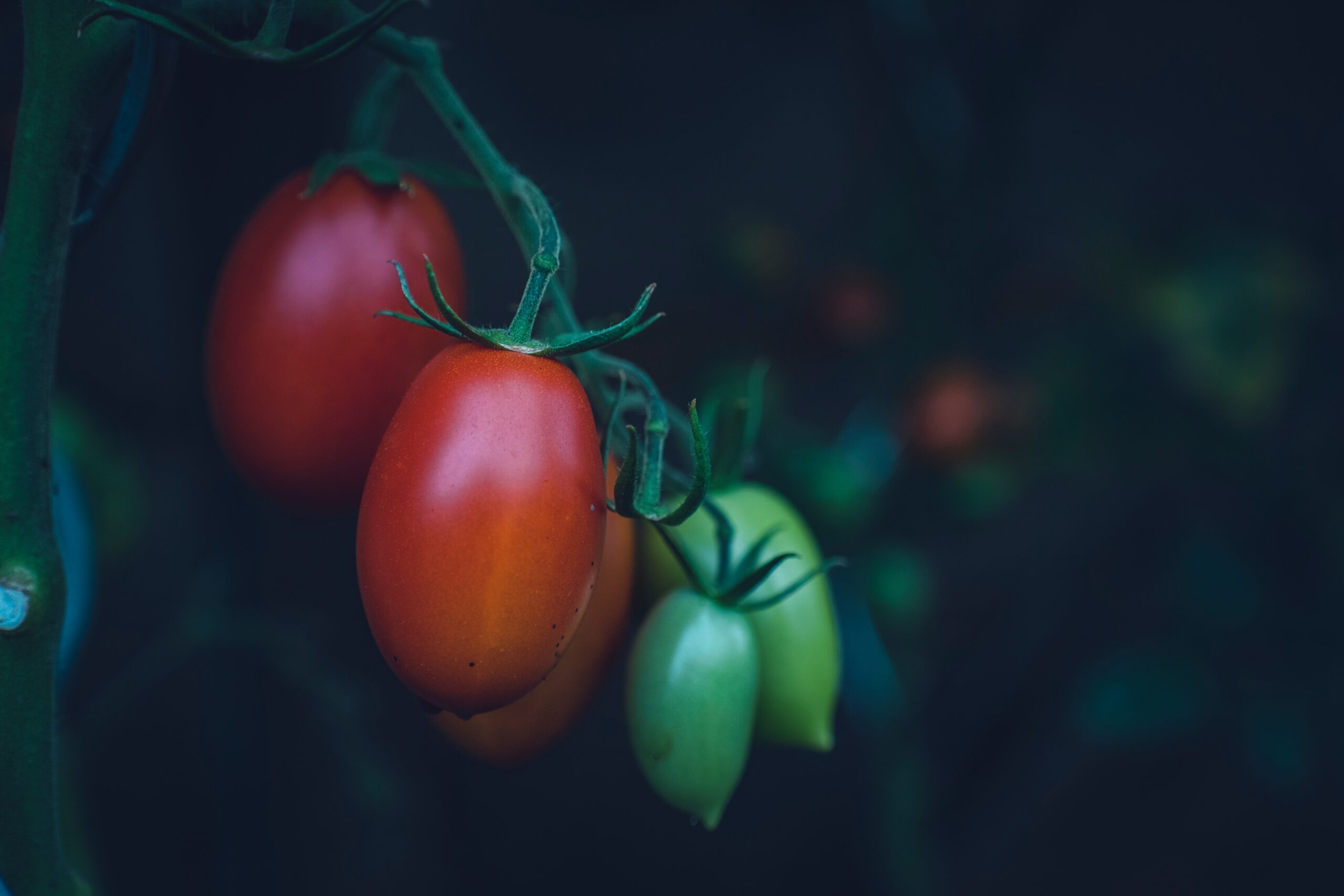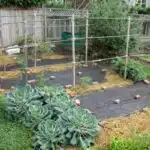Have you ever noticed how coincidences have a way of connecting us? It’s almost as if the universe is working in our favor. Perhaps this is why so many gardeners find themselves drawn to a special kind of tomato plant: the San Marzano Tomato Plant. With its sweet and tangy flavor, it has become a favorite among gardeners around the globe.
As a specialist in botany and gardening, I’m here to tell you that growing and caring for your own San Marzano Tomato Plant can be an incredibly rewarding experience. Not only will you get to enjoy the unique flavor of this heirloom variety, but you’ll also get to take ownership over your own creation—from start to finish!
In this article, we’ll cover everything you need to know about growing and caring for your very own San Marzano Tomato Plant. We’ll discuss soil requirements, planting techniques, sunlight needs, and more. By the end of this guide, you’ll have all the information necessary for growing your very own tomato plant at home!
Choose A Suitable Location For Your San Marzano Tomato Plant
When it comes to growing the San Marzano tomato, you may be tempted to think it’s too difficult for a beginner. But don’t let a lack of experience stop you from taking on this rewarding challenge – with the right preparation and care, even novice gardeners can successfully cultivate these delicious tomatoes.
The key to success is choosing the right location. A sunny spot that gets at least six hours of direct sunlight per day is ideal for your San Marzano tomato plant. You’ll also need to make sure that there’s good air circulation around the plant, so try not to place it too close to other plants or structures.
It’s important to pick an area with well-draining soil as well. Soil that retains too much moisture can lead to root rot and other problems, so if you’re unsure about your soil type, do some research or take a sample to your local gardening store for advice. Once you’ve found the perfect spot, you should be ready to start planting!
Plant San Marzano Tomato Plant In The Right Soil
It’s time to give your San Marzano tomato plant the best chance of success – and that starts with getting the soil right. Think of it as a gardener’s golden rule; if you get this part right, the rest will follow. So let’s dive in!
First things first: you’ll need soil that contains plenty of organic matter, such as aged compost or manure. This will help retain moisture while supporting a healthy root system. You also want to make sure your soil is well-draining, otherwise your San Marzano tomatoes will be sitting in waterlogged mud and won’t be too happy about it! As an anachronism, think of it like Goldilocks looking for porridge – not too wet, not too dry – just right!
In addition to organic matter, you’ll also want to add some slow-release fertilizer to your mix when planting. This will ensure your San Marzano tomatoes have all the nutrients they need to thrive and produce lots of delicious fruit. If desired, you can even add some vermiculite or perlite to improve drainage and aeration even further.
With the right soil in place and the perfect balance achieved, your San Marzano tomato plant is now ready for its next step on the journey towards success – watering correctly.
Water San Marzano Tomato Plant Correctly
Watering your San Marzano tomato plant is an important part of the growing process. It is essential to ensure that your plant receives enough water, but not too much. To ensure that you give your plant the best care possible, it is important to understand how to water it correctly.
Firstly, you should determine how often you need to water your San Marzano tomato plant. This will depend on a few factors, such as the size of the pot, whether it’s in a hot or dry climate and also the season. Generally speaking, during the early stages of growth you should water deeply and regularly – once every few days or so – while allowing the soil to dry out slightly between each watering session. As your plant grows bigger and establishes deeper roots, you can reduce watering frequency.
When you do water your San Marzano tomato plant, make sure that you use lukewarm water and avoid using cold water which can shock its delicate roots. Water until it begins to seep from the drainage holes at the bottom of the pot; this means that you’ve given it enough moisture for its needs. Additionally, if temperatures are high or if there is little rainfall in your area, then consider misting your plants with a spray bottle occasionally to help keep them hydrated and healthy.
By following these guidelines for watering your San Marzano tomato plants correctly, you can ensure that they grow strong and produce plenty of delicious fruits! With proper care and attention throughout their life cycle, these delectable tomatoes will reward you with delicious harvests year after year! To give them even better returns on their investment in growing these tomatoes, be sure to also fertilize them properly as well!
Fertilize San Marzano Tomato Plant Properly
The fourth key step in growing a San Marzano tomato plant is proper fertilization. Due to its heavy nutrient requirements, it’s important to have the right fertilizer on hand. Applying an organic fertilizer every four weeks during the season is usually sufficient, but if the plants are struggling, they may need more frequent applications. It’s also important to use a fertilizer specifically designed for tomatoes – using other fertilizers may cause damage or even kill the plant.
When applying fertilizer, make sure to follow the instructions on the label carefully and avoid over-fertilizing. Over-fertilizing can burn the roots of your San Marzano tomato plants, leading to stunted growth and poor production. An effective way to spread fertilizer evenly is by side-dressing around each individual plant at least once per season. This helps ensure that all of the plants get enough nutrition without overdoing it in any one area.
Fertilizing San Marzano tomato plants properly will help ensure that they grow healthy and produce plenty of tasty tomatoes throughout the season. With consistent applications of organic fertilizer, these vigorous plants can thrive in any garden setting and provide you with delicious harvests for years to come! As we move forward into pruning these resilient plants, keep in mind that given the right care and attention, your San Marzano tomatoes will bring plentiful rewards for years ahead!
Prune San Marzano Tomato Plant
Pruning a San Marzano tomato plant may seem like an unnecessary step, but it is actually essential to the health of the plant and its production of the flavorful fruits. Pruning can seem daunting, but if done properly, it will help the plant yield bigger and better tomatoes. Here are some tips to ensure your pruning efforts are successful:
First and foremost, pruning is best done while the plant is young. It will be easier to keep up with pruning as the plant grows than trying to do it all at once when it’s mature. Start by cutting off any stems that have become too long or spindly. This will allow more sunlight to reach the lower parts of the plant, helping them grow more vigorously and evenly. Then, pinch off any lateral branches that are competing for nutrients with other parts of the plant. Finally, remove any dead or diseased leaves or branches from your San Marzano tomato plant.
Next, you’ll want to create an open center in your San Marzano tomato bush structure by removing some of its limbs from the center outward in order to allow air circulation around each branch. This will also help prevent fungal diseases from taking hold in your plants’ foliage. Additionally, by removing some of these interior limbs you’re ensuring that each branch has plenty of room for new growth and more flowers and tomatoes! Lastly, make sure not to get carried away when pruning- you don’t want to overdo it as too much pruning can be detrimental to your plants’ health and productivity!
By following these simple steps, you’ll be well on your way towards having a healthy San Marzano tomato bush producing delicious fruit all season long!
Protect San Marzano Tomato Plant From Pests
It may seem intimidating to protect your San Marzano tomato plant from pests, but with a few simple steps you can keep your plant healthy and safe. To start, it is important to understand that prevention is the best method for keeping pests away. Here are four easy ways to help protect your San Marzano tomato plants:
Provide adequate spacing between plants. This will help prevent overcrowding and encourage good airflow, which discourages pest infestations.
Incorporate organic pest control methods such as companion planting and trap cropping. By planting flowers or herbs known to repel certain pests near your tomato plants, you can reduce the number of insects attracted to them.
Keep your garden clean by removing dead leaves and other debris from around the base of the plants. This will reduce the chances of harboring unwanted pests in the soil or on the surface of the foliage.
Use physical barriers such as row covers or netting to exclude troublesome insects from invading your tomato patch.
By following these simple steps, you can keep your San Marzano tomato plant safe and secure from potential pest invasions. The key is to be vigilant and observe changes in plant health that could indicate an infestation has taken place. Taking immediate action upon noticing any signs of pests can help mitigate damage done to your tomato plant before it becomes too severe. Regularly inspecting your plants for signs of disease or insect activity is also essential for keeping them healthy over time.
Monitor San Marzano Tomato Plant For Diseases
Monitoring your San Marzano tomato plant for disease is an important step in ensuring a healthy, productive harvest. To ensure the highest quality fruit and prevent disease or infestation, there are a few steps to take:
First, inspect the foliage at least once a week. Look for discoloration of leaves or wilting. Any yellowing leaves should be removed immediately to avoid spreading any problems onto other branches or plants. Additionally, check for any bug activity on the foliage and stems. Identifying pests early can help you prevent an infestation from occurring.
Second, be sure to water properly as over- or under-watering can lead to disease. Be sure that your soil has adequate drainage and only water when the top inch of soil feels dry. When watering, do it at ground level rather than from above as wetting the foliage can cause fungal diseases like blight and leaf spot.
Third, fertilize your plant regularly with organic compost to give it the nutrients it needs for growth and fruiting. Regularly applying mulch around your plant will also help retain moisture in the soil and reduce weeds which could harbor diseases or pests.
Fourth, use companion planting to deter pests from damaging your San Marzano tomatoes. Planting marigolds near your tomatoes can help ward off some insect pests such as nematodes, aphids, and whitefly while basil can help repel hornworms and flies.
By following these steps you can ensure that your San Marzano tomato plant is healthy and safe from disease throughout its life cycle
Support San Marzano Tomato Plant With Stakes
Staking is an important part of supporting a San Marzano tomato plant. This helps the plant to remain upright, and prevents it from being damaged by wind or heavy rains. Staking also allows for better air circulation around the plant, which reduces the risk of fungal diseases. When staking, be sure to use sturdy stakes that are taller than the plants, so that they can support the weight of the tomatoes as they grow.
When choosing stakes, look for materials that are strong enough to hold up against strong winds and heavy rain. Bamboo or wood stakes work well; metal poles should be avoided due to their tendency to corrode over time. Make sure the stakes are tall enough so they can support the weight of your tomato plants as they grow and bear fruit – at least a foot higher than the height of your plants. Place them in a circle around your plant and insert them into the soil about 12 inches away from the stem.
Securely tie strings or twine around each stake and attach them at various points on each stem to give extra stability as needed. Once you have secured all of your stakes, check them regularly during summer storms or gusts of wind to make sure none have loosened or been damaged. By following these steps, you will ensure that your San Marzano tomato plants receive adequate support throughout their growing season.
Mulch San Marzano Tomato Plant
Mulching your San Marzano Tomato Plant is a great way to nourish the soil, lock in moisture and reduce weeds. It’s a bit like giving your plant a warm blanket of protection! With the right kind of mulch, your tomato plants will thrive and give you an abundant harvest.
As a botanist and gardener, I’m often asked what kind of mulch works best for San Marzano tomatoes. The answer to this question depends on the soil in which the plants are growing. For example, if your soil is sandy or has poor drainage, use wood chips or bark mulch. These types of mulches help absorb and retain water during dry spells. On the other hand, if you’re working with clay-heavy soil, go with straw or hay as these help improve aeration and drainage while still locking in moisture.
Regardless of the type of mulch you choose, it’s important to spread it evenly around the base of your tomato plant at a depth of 3-4 inches (7-10cm). This should be done after planting but before watering the plant to avoid disturbing its roots. Plus, make sure to keep the mulch away from stems and leaves as this can cause mildew and pest problems down the line.
With proper mulching in place, you’ll be well on your way towards harvesting delicious San Marzano tomatoes from your own backyard!
Harvest San Marzano Tomatoes
Harvesting San Marzano tomatoes is a rewarding experience for any gardener. To ensure your tomatoes are ripe and ready to be picked, there are several things you should look for. Here’s a list of indicators that it’s time to harvest:
- The tomato has reached its full size or color.
- The tomato feels firm when gently squeezed.
- The stem near the tomato has started to dry out and shrivel.
When harvesting, you should use scissors or pruning shears to cut the stems rather than pulling the tomatoes off by hand. This will help ensure that the plant continues to produce more tomatoes in future harvests and will also prevent damage to the fruit itself. It’s also important to be careful not to leave behind any green tomatoes as they can attract pests and affect the overall health of your crop.
Once you have harvested your San Marzano tomatoes, they can be stored in a cool, dry place for up to two weeks before they start to spoil. Storing them in an airtight container is a great way to keep them fresh longer and maintain their flavor and texture throughout their shelf life. With proper care and storage, your San Marzano tomatoes will provide you with delicious results every time! With these tips in mind, you’ll be able harvest and store your San Marzano tomatoes with ease so that you can enjoy their flavor all season long!
Store San Marzano Tomatoes
Harvesting and storing San Marzano tomatoes can be an exciting experience. After your nurturing and care, you’ve finally been rewarded with the delicious red orbs that make pasta sauce so tasty. Here’s how to store them for maximum flavor:
First of all, it is important to note that San Marzano tomatoes should be harvested when they are completely ripe. If you pick them too early, their flavor will not be as optimal as if you wait until they reach a deep red color. Here are some tips to help ensure you get the best tasting tomatoes:
- Pick tomatoes at their peak ripeness
- Don’t leave the fruits on the vine too long past ripeness
- Cut away any blemished or discolored parts before storage
For storage, it is best to refrigerate the tomatoes in order to maintain their flavor and texture for longer periods of time. If possible, try to store them in airtight containers so that there is less chance of moisture loss or contamination from other items in the refrigerator. Additionally, storing your tomatoes away from direct sunlight will help keep them fresh. With a little bit of preparation and careful handling, your San Marzanos can remain flavorful for quite some time!
Avoid Common Growing Mistakes
It is ironic that, in today’s world of instant gratification, we are often too quick to expect the same from our plants. However, growing San Marzano tomato plants requires patience and a deep understanding of their needs. To truly enjoy this incredible variety of tomato, it is important to avoid common mistakes that can lead to poor harvests.
One of the most easily avoided errors is over-watering. Many gardeners believe that more water equals a better yield; however, this simply isn’t the case with San Marzano tomatoes. Too much water can cause root rot and other diseases. Instead, water deeply but infrequently to ensure strong roots and healthy growth.
Similarly, fertilizing should be done carefully in order to prevent damage or nutrient deficiencies. Avoid applying fertilizer directly onto foliage as this can lead to foliar burn. Instead, mix fertilizer into the soil prior to planting and then again after flowering has begun. This will provide the plant with all the necessary nutrients for a robust harvest without causing harm to delicate leaves or flowers.
By keeping these common mistakes in mind while caring for your San Marzano tomato plants, you can help ensure they reach their full potential and produce delicious fruits throughout the season!
Consider Growing San Marzano Tomato Plant In Containers
Growing the San Marzano tomato in containers is a great way to get the most out of your plant. Not only can you control the environment more closely, but you also don’t have to worry about it taking up too much space. Plus, by using pots and planters, you’ll be able to move them around throughout the season if needed.
When growing this variety in containers, make sure to use high-quality potting soil that’s rich in organic matter. Also, make sure that there are enough drainage holes so that water won’t pool at the bottom of your container. Finally, select a container that’s large enough for your plant and make sure it has plenty of room for roots to spread out.
As with any other type of gardening, when growing San Marzano tomatoes in containers there will be challenges along the way. Make sure to pay special attention as the season progresses and troubleshoot any problems as they arise. Keep an eye out for pests or diseases that could affect its growth and take action quickly if necessary. With proper care and attention, you should be able to enjoy a bumper crop of delicious tomatoes from your home garden!
Troubleshoot Growing Challenges
When it comes to growing San Marzano tomatoes, there are often challenges that can arise. In this section, we’ll look at common troubleshooting tips that can help ensure a successful crop.
The first step is to ensure the soil you’re planting in is of high quality. It should be well-draining and rich in organic matter. If your soil isn’t up to par, consider adding compost or fertilizer to boost its nutrients and improve drainage. Additionally, pay close attention to the pH level of the soil. San Marzano tomatoes prefer a slightly acidic soil with a pH between 6 and 7. You can test the pH of your soil with an inexpensive testing kit or by sending a sample off for testing.
It’s also important to keep an eye on pests and diseases that might affect your plants. Common problems include spider mites, aphids, tomato hornworms, and fungal diseases like early blight and late blight. Regularly inspect your plants for signs of infestation or disease and take action immediately if something is detected. Pruning away dead or diseased foliage can also help prevent further spread of any potential issues.
By following these simple steps, you can help ensure you get the most out of your San Marzano tomatoes – from germination all the way through harvest!
Reap The Benefits Of Growing San Marzano Tomato Plant
Reaping the rewards of growing a San Marzano tomato plant is like harvesting a bounty of flavor and nutrition. With their vibrant colors, their sweet-tangy taste, and their robust texture, these tomatoes are worth every effort spent to grow them. As any experienced gardener knows, with great reward comes great responsibility in tending to the plant so that it can give its best yield.
The key to success lies in understanding the needs of your particular variety of San Marzano tomato and providing them with the right environment, soil conditions, and care. This means paying attention to everything from proper pruning techniques to optimal watering schedules. Good gardening practices also include watching out for pests or disease that may be threatening your crop.
By taking these steps and cultivating your plant with love and devotion, you will be rewarded with an abundance of deliciousness. Not only can you savor this natural treat yourself but it’s also a wonderful gift to share with neighbors and friends who will appreciate your hard work! Allowing a San Marzano tomato plant to become part of your garden is truly an act of generosity that will pay off in spades!
Frequently Asked Questions
What Temperature Is Best For Growing San Marzano Tomato Plants?
Do you want to know the best temperature for growing San Marzano tomato plants? This is an important factor in growing and caring for these delicious tomatoes. Let’s take a look at what environment will ensure their success.
First, it’s essential to understand that San Marzano tomatoes prefer warm climates. The ideal temperature range for them is between 70-80°F during the day, and no lower than 60°F at night. In general, they don’t do well in temperatures below 55°F or above 85°F and can be damaged if exposed to freezing temperatures.
A few other environmental factors are also key to keeping your plants happy and healthy: •tLight: Tomatoes need as much direct sunlight as possible, so make sure your plants get 6-8 hours of sun each day. When you’re planting outdoors, pick a spot with full sun exposure. •tWater: To keep the soil moist but not soggy, water your plants once or twice a week depending on the weather conditions. Be sure not to let the soil dry out completely between waterings. •tSoil: Plant your tomatoes in well-draining loamy soil that is high in organic matter. Amend it with compost to improve its nutrients and moisture retention capabilities.
Finally, there are also some maintenance activities that should be done regularly in order to ensure healthy growth of San Marzano tomatoes: pruning off excess foliage; removing any diseased leaves; staking or trellising them if necessary; and checking for signs of pests or diseases such as aphids or blight. All these activities will help create an optimal environment for your San Marzano tomato plant and increase its chances of producing a bountiful harvest!
How Long Does It Take For San Marzano Tomatoes To Mature?
Growing San Marzano tomatoes isn’t just a hobby for the passionate gardener; it’s a science. It requires knowledge of the right conditions to ensure success in cultivating this delicious variety of tomato. So, you may be wondering how long it takes for San Marzano tomatoes to mature?
Well, irony aside, the answer lies in understanding the natural cycles of growth and maturation for these plants. Generally speaking, it takes about 80 days from planting until harvest, depending on the variety and growing conditions. This is why it’s so important to start early with proper soil preparation and consistent watering and fertilizing throughout the season.
The key is to create an environment where the plant can thrive – one that includes plenty of sun, nutrient-rich soil, and adequate water. You’ll also need to provide support for your San Marzano plants as they grow taller, as well as protection from pests and disease. With proper care, you can expect a bumper crop of ripe fruit ready for canning or eating fresh!
Growing tomatoes may seem like a challenge at first but with patience and dedication you’ll soon be harvesting your own delicious home-grown San Marzano tomatoes – all thanks to your hard work!
What Type Of Fertilizer Should Be Used For San Marzano Tomato Plants?
When growing San Marzano tomatoes, it’s important to use the right fertilizer for optimal results. The type of fertilizer you choose is determined by the stage of growth your plants are in and soil pH levels. For example, during the early stages of growth, a balanced fertilizer like 10-10-10 should be used to provide essential nutrients for healthy root development. As your plants become more established, an organic compost or manure can be added to the soil to provide additional nutrients.
It’s also important to understand the different types of fertilizer available on the market and which ones are best suited for San Marzano tomato plants. If a synthetic fertilizer is chosen, look for one that has a higher nitrogen content since this helps promote healthy foliage growth. On the other hand, if you prefer an organic option, look for a slow-release formula that provides long-term nutrition and doesn’t harm beneficial microorganisms in the soil.
To ensure proper nutrition throughout the season, it’s recommended to fertilize your San Marzano tomato plants every two weeks with either a liquid or granular solution according to package instructions. Once your plants reach fruit production stage, reduce frequency and switch to an organic formula with lower nitrogen levels as too much nitrogen at this stage can cause excessive foliage growth and reduced yield. By following these tips you’ll be sure to harvest delicious San Marzano tomatoes!
How Often Should San Marzano Tomato Plants Be Pruned?
Pruning San Marzano tomato plants is essential to their growth, and understanding the right frequency of pruning is key. However, there’s no need to worry as the process is fairly straightforward. With a little bit of effort and care, you can ensure that your plants remain healthy throughout their growth cycle.
As a specialist in botany and gardening, I understand how important it is to properly prune plants for optimal growth. Regular pruning helps keep San Marzano tomato plants healthy by removing dead or diseased branches, promoting air circulation, and encouraging new growth. To ensure maximum yield of flavor-packed San Marzano tomatoes, it’s best to start pruning when the plant reaches about one foot tall and continue until harvest time. It is recommended that you prune every two weeks from April through August; however, if you live in a warmer climate or if plants are growing rapidly due to high temperatures or humidity, then more frequent pruning may be beneficial.
To make sure your San Marzano tomatoes are growing their best and producing the most flavorful fruit possible, pay close attention to their needs and take action when necessary – including regular pruning. It may seem like a lot of work at first but with some practice and patience, you’ll be able to develop a routine that works for you and your plants. Plus, once you see all those delicious tomatoes on the vine come harvest time, it will all be worth it!
Is It Possible To Grow San Marzano Tomato Plants In A Greenhouse?
It is possible to grow San Marzano tomato plants in a greenhouse, as long as the climate conditions are just right. An astonishing 35% of all greenhouses in the United States are devoted to growing tomatoes, so this is by no means an uncommon practice. As a specialist in botany and gardening, I’m here to share my tips on how to make the most out of this endeavor.
To begin with, it’s essential to ensure the greenhouse has adequate lighting and ventilation. Sunlight is essential for optimal growth and ripening of tomatoes, so make sure your greenhouse has plenty of windows or skylights that can be opened when necessary. It’s also important to keep temperatures steady and consistent; anything between 65°F-85°F will do. To maintain proper humidity levels, consider investing in a humidifier or dehumidifier.
As for pruning the tomatoes, it’s best to wait until they have set their first few fruits before trimming them back. Pruning helps promote air circulation around the plants and encourages them to produce more fruit rather than foliage. Make sure you wear gloves when pruning since San Marzano tomatoes contain tiny thorns on their branches which can easily irritate your skin. Additionally, it’s important that you don’t over-prune as excess pruning may lead to fewer flowers being produced by the plant.
Growing San Marzano tomatoes in a greenhouse is definitely within reach provided you take good care of your plants and provide them with the right environment for optimal growth and ripening. With proper management of temperature, light levels, humidity and regular pruning practices, you’ll soon be able to enjoy delicious home-grown tomatoes!
Conclusion
The San Marzano Tomato plant is a rare cultivar of tomato that requires the perfect balance of temperature, sunlight, and nutrition to reach its full potential. With the right care and attention, this hardy plant can provide an abundance of delicious tomatoes for many years to come.
Like a gardener training a bonsai tree, tending to your San Marzano Tomato plants will require patience and dedication. But if you are willing to devote time and energy into providing the ideal growing environment for your plants, you will be rewarded with luscious red tomatoes bursting with flavor.
So get out there and start planting! With the right knowledge and supplies, you can be well on your way to creating your own lush tomato garden full of juicy San Marzano fruits. Happy gardening!





























